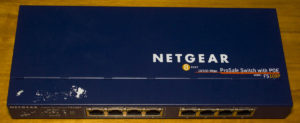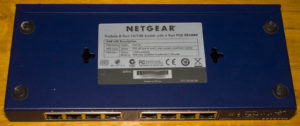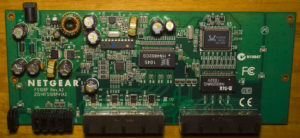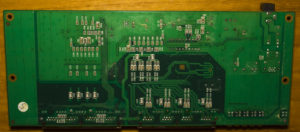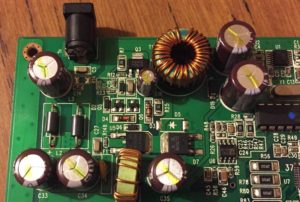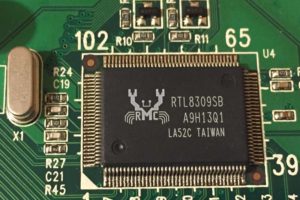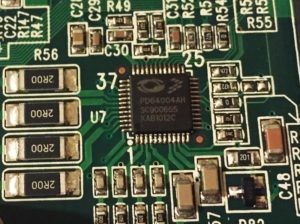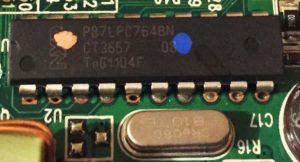Today we’ll be taking a look at Netgear ProSafe 8 Port 10/100 Switch with 4 Port POE (FS108P) which is an 8 port switch with standard 4x 10/100 ports and 4x 10/100 ports with POE. This would be one of the first POE switches I’ve looked at.
Two screws later and we’re in.
It looks like a pretty standard switch, there is some extra board space to the right of the board so they could have potentially made it smaller (or maybe there is an 8 port POE model which uses that space). Date code is 3rd week in 2011. Some things that pop out are include:
– Instead of being powered by a 12V adapter it’s powered with an 48V adapter so that’s an easy solution to solve the voltage required for the POE ports.
– They use a transformer which looked like an inductor at first but if you take a look closely you will see two separate winding, one thick wire and one thin wire
– They are using a DIP microcontroller, I don’t think I’ve seen a DIP MCU in a switch before.
The power input goes through some ferrites, there are some 47uF 100V capacitors around along with a small PTC fuse, an inductor and some other misc components which would convert the 48V DC to AC, which eventually feeds into the transformer (29:8 turn ratio, output is 3.3V) and we have 1000uF 16V capacitors on the output. There is a Champion CM3708A DC-DC converter (5.5V max input) and a Feeling Tech FP5001 DC-DC converter (40V max input).
The main chip is an Realtek RTL8309SB, an 8 port 10/100 switch controller and can support QoS and VLAN but it’s all up to the manufacturer to implement those features. Running with a 25MHz crystal.
As the main chip doesn’t handle the PoE, it’s handled by the MicroSemi PD64004AH, an 4-port PoE manager for 802.3af/at which can supply 350mA / 600mA, it has some fault detection, uses external 2 ohm resistors for current sensing (which we see on board) and you can cascade up to 8 of these together to enable PoE on more ports. On the back of the board, they’ve got some star routing going on.
The DIP microcontroller is a NXP P87LPC764, an 20 pin 80C51 MCU with 4KB OTP EPROM, 128 byte RAM, 2.7V to 6V operating range, up to 20MHz, 2x 16bit timers, UART, I2C, watchdog, interrupts to name a few features so it’s a pretty featured MCU. This one runs from what I think is a 6 MHz crystal and one thing it seems to be doing is controlling the front panel LEDs.
And that’s all.
